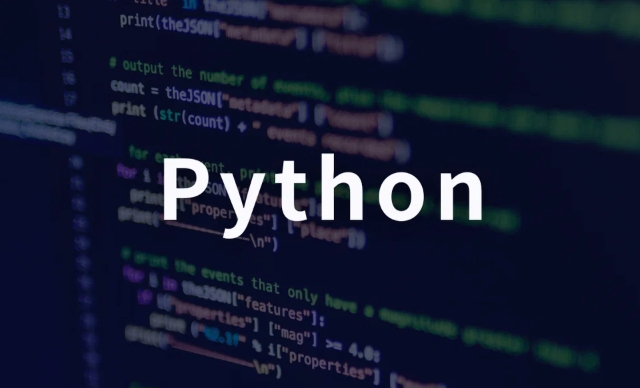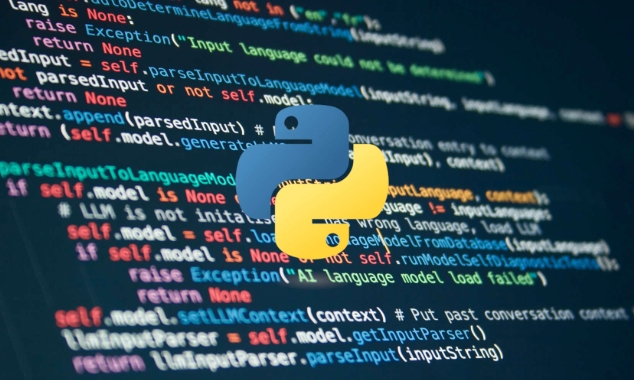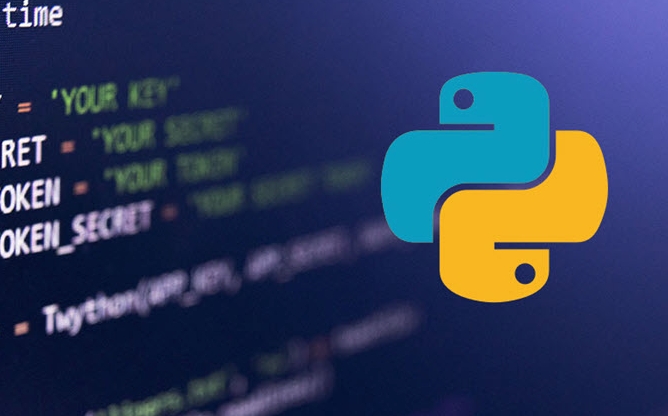How to mock a Python class for unit testing?
Jul 11, 2025 am 02:01 AMWhen writing unit tests for Python classes, mock technology can bypass external dependencies and is mainly implemented using the unittest.mock module or manual pile driving. 1. Use unittest.mock.patch to replace specific method behavior, such as the return value of the mock class method and verify the call; 2. Create a Mock class to replace the real class and simulate the overall behavior; 3. Use MagicMock to quickly generate fake data and use it in combination with patch. The core is to isolate the external environment through "stand-alone" and "preset results", so that the test focuses on the logic itself.

When you need to write unit tests for a Python class, you often encounter situations where you rely on external systems (such as databases, network requests). At this time, using mock technology can help you bypass these actual calls and make the test focus more on the logic itself. There are two main ways to implement it: use the unittest.mock module or manually drive piles.

1. Use unittest.mock.patch to replace the class method
The most common way is to replace the behavior of a certain class or method by patch . For example, you have a class that depends on an external API:
class MyService:
def fetch_data(self):
# The HTTP request will actually be initiated to return requests.get("https://api.example.com/data")In the test you can mock its return value like this:

from unittest.mock import patch
@patch('my_module.MyService.fetch_data')
def test_fetch_data(mock_fetch):
mock_fetch.return_value.status_code = 200
mock_fetch.return_value.json.return_value = {'key': 'value'}
service = MyService()
result = service.fetch_data().json()
assert result['key'] == 'value'This way works for you want to control the output of a specific method without actually executing it.
Tips:
- If you want to verify that the method is called, you can use
assert_called_once_with(). -
patchcan decorate functions and classes, or use a context manager insetUpmethod. - Note that the module path must be written correctly, for example,
my_module.MyService.fetch_datamust be consistent with the import path.
2. Create a Mock class to simulate object behavior
If you don't just want to mock a method, but want to simulate the behavior of the entire class, you can directly create a mock class to replace the real class:

class MockDB:
def connect(self):
return True
def query(self, sql):
return [{"id": 1, "name": "test"}]Then replace the original class in the test:
@patch('my_module.Database', new=MockDB)
def test_db_query():
db = Database()
result = db.query("SELECT * FROM table")
assert len(result) == 1This method is suitable for you to want the entire class to follow the mock process, rather than just modifying one or two methods.
3. Use MagicMock to quickly generate fake data
If you just need to quickly generate some return values ??and don't want to define the complete mock class yourself, you can use MagicMock :
from unittest.mock import MagicMock mock_obj = MagicMock() mock_obj.method.return_value = 42 assert mock_obj.method() == 42
You can use it in combination with patch , such as replacing the constructor of a certain class:
@patch('my_module.MyClass', autospec=True)
def test_init(MockClass):
instance = MockClass.return_value
instance.calculate.return_value = 100
obj = MyClass()
result = obj.calculate()
assert result == 100Basically that's it. The core of mock is "stand-in" and "preset results", so that your tests can run without relying on the external environment.
The above is the detailed content of How to mock a Python class for unit testing?. For more information, please follow other related articles on the PHP Chinese website!

Hot AI Tools

Undress AI Tool
Undress images for free

Undresser.AI Undress
AI-powered app for creating realistic nude photos

AI Clothes Remover
Online AI tool for removing clothes from photos.

Clothoff.io
AI clothes remover

Video Face Swap
Swap faces in any video effortlessly with our completely free AI face swap tool!

Hot Article

Hot Tools

Notepad++7.3.1
Easy-to-use and free code editor

SublimeText3 Chinese version
Chinese version, very easy to use

Zend Studio 13.0.1
Powerful PHP integrated development environment

Dreamweaver CS6
Visual web development tools

SublimeText3 Mac version
God-level code editing software (SublimeText3)

Hot Topics
 How to handle API authentication in Python
Jul 13, 2025 am 02:22 AM
How to handle API authentication in Python
Jul 13, 2025 am 02:22 AM
The key to dealing with API authentication is to understand and use the authentication method correctly. 1. APIKey is the simplest authentication method, usually placed in the request header or URL parameters; 2. BasicAuth uses username and password for Base64 encoding transmission, which is suitable for internal systems; 3. OAuth2 needs to obtain the token first through client_id and client_secret, and then bring the BearerToken in the request header; 4. In order to deal with the token expiration, the token management class can be encapsulated and automatically refreshed the token; in short, selecting the appropriate method according to the document and safely storing the key information is the key.
 How do you perform unit testing for php code?
Jul 13, 2025 am 02:54 AM
How do you perform unit testing for php code?
Jul 13, 2025 am 02:54 AM
UnittestinginPHPinvolvesverifyingindividualcodeunitslikefunctionsormethodstocatchbugsearlyandensurereliablerefactoring.1)SetupPHPUnitviaComposer,createatestdirectory,andconfigureautoloadandphpunit.xml.2)Writetestcasesfollowingthearrange-act-assertpat
 How to test an API with Python
Jul 12, 2025 am 02:47 AM
How to test an API with Python
Jul 12, 2025 am 02:47 AM
To test the API, you need to use Python's Requests library. The steps are to install the library, send requests, verify responses, set timeouts and retry. First, install the library through pipinstallrequests; then use requests.get() or requests.post() and other methods to send GET or POST requests; then check response.status_code and response.json() to ensure that the return result is in compliance with expectations; finally, add timeout parameters to set the timeout time, and combine the retrying library to achieve automatic retry to enhance stability.
 Python variable scope in functions
Jul 12, 2025 am 02:49 AM
Python variable scope in functions
Jul 12, 2025 am 02:49 AM
In Python, variables defined inside a function are local variables and are only valid within the function; externally defined are global variables that can be read anywhere. 1. Local variables are destroyed as the function is executed; 2. The function can access global variables but cannot be modified directly, so the global keyword is required; 3. If you want to modify outer function variables in nested functions, you need to use the nonlocal keyword; 4. Variables with the same name do not affect each other in different scopes; 5. Global must be declared when modifying global variables, otherwise UnboundLocalError error will be raised. Understanding these rules helps avoid bugs and write more reliable functions.
 Python FastAPI tutorial
Jul 12, 2025 am 02:42 AM
Python FastAPI tutorial
Jul 12, 2025 am 02:42 AM
To create modern and efficient APIs using Python, FastAPI is recommended; it is based on standard Python type prompts and can automatically generate documents, with excellent performance. After installing FastAPI and ASGI server uvicorn, you can write interface code. By defining routes, writing processing functions, and returning data, APIs can be quickly built. FastAPI supports a variety of HTTP methods and provides automatically generated SwaggerUI and ReDoc documentation systems. URL parameters can be captured through path definition, while query parameters can be implemented by setting default values ??for function parameters. The rational use of Pydantic models can help improve development efficiency and accuracy.
 Python for loop with timeout
Jul 12, 2025 am 02:17 AM
Python for loop with timeout
Jul 12, 2025 am 02:17 AM
Add timeout control to Python's for loop. 1. You can record the start time with the time module, and judge whether it is timed out in each iteration and use break to jump out of the loop; 2. For polling class tasks, you can use the while loop to match time judgment, and add sleep to avoid CPU fullness; 3. Advanced methods can consider threading or signal to achieve more precise control, but the complexity is high, and it is not recommended for beginners to choose; summary key points: manual time judgment is the basic solution, while is more suitable for time-limited waiting class tasks, sleep is indispensable, and advanced methods are suitable for specific scenarios.
 How to parse large JSON files in Python?
Jul 13, 2025 am 01:46 AM
How to parse large JSON files in Python?
Jul 13, 2025 am 01:46 AM
How to efficiently handle large JSON files in Python? 1. Use the ijson library to stream and avoid memory overflow through item-by-item parsing; 2. If it is in JSONLines format, you can read it line by line and process it with json.loads(); 3. Or split the large file into small pieces and then process it separately. These methods effectively solve the memory limitation problem and are suitable for different scenarios.
 Python for loop over a tuple
Jul 13, 2025 am 02:55 AM
Python for loop over a tuple
Jul 13, 2025 am 02:55 AM
In Python, the method of traversing tuples with for loops includes directly iterating over elements, getting indexes and elements at the same time, and processing nested tuples. 1. Use the for loop directly to access each element in sequence without managing the index; 2. Use enumerate() to get the index and value at the same time. The default index is 0, and the start parameter can also be specified; 3. Nested tuples can be unpacked in the loop, but it is necessary to ensure that the subtuple structure is consistent, otherwise an unpacking error will be raised; in addition, the tuple is immutable and the content cannot be modified in the loop. Unwanted values can be ignored by \_. It is recommended to check whether the tuple is empty before traversing to avoid errors.






